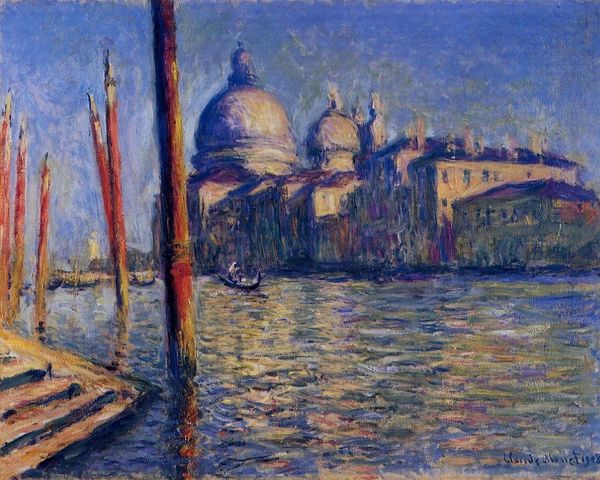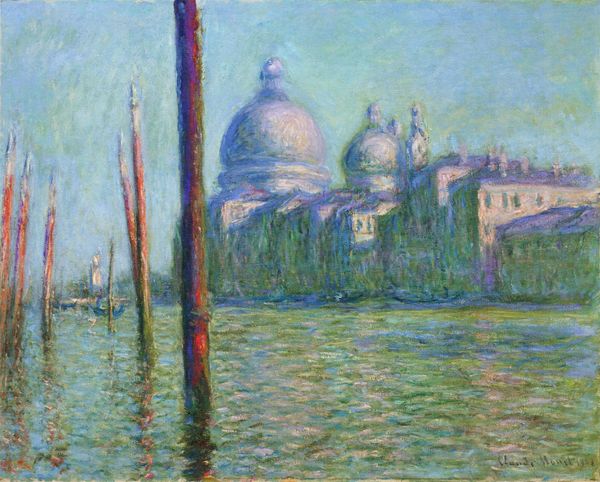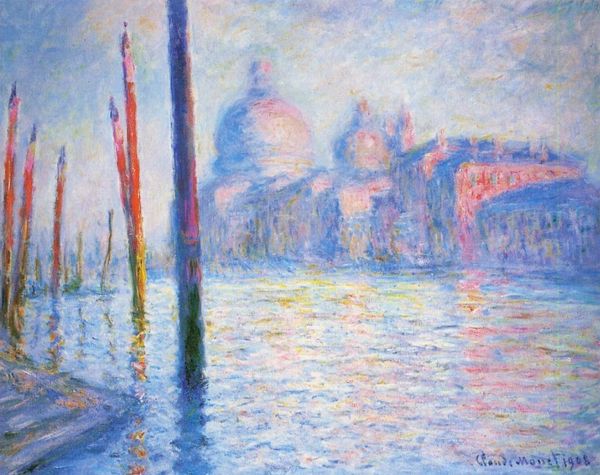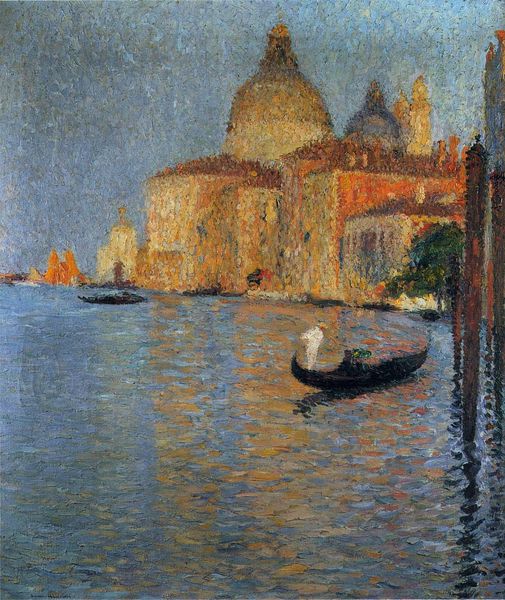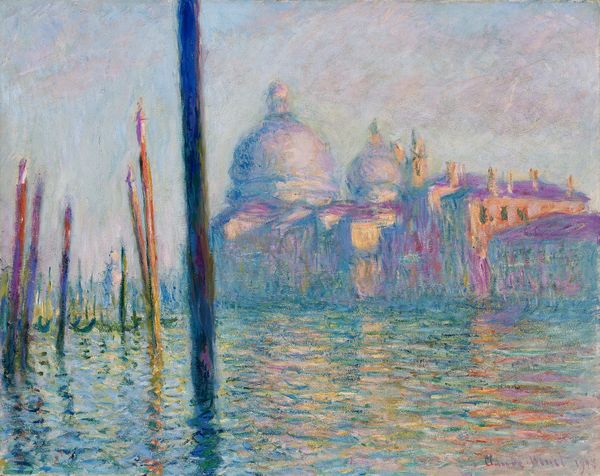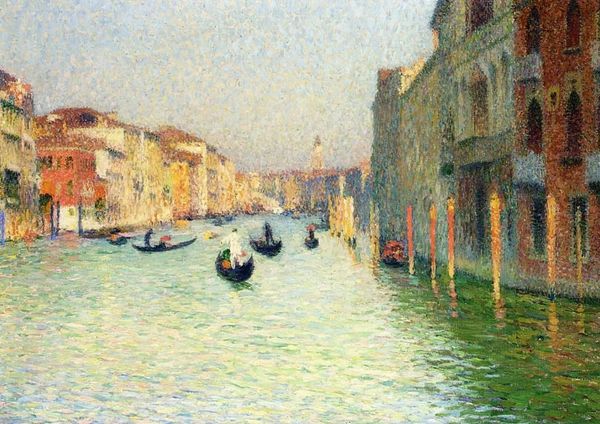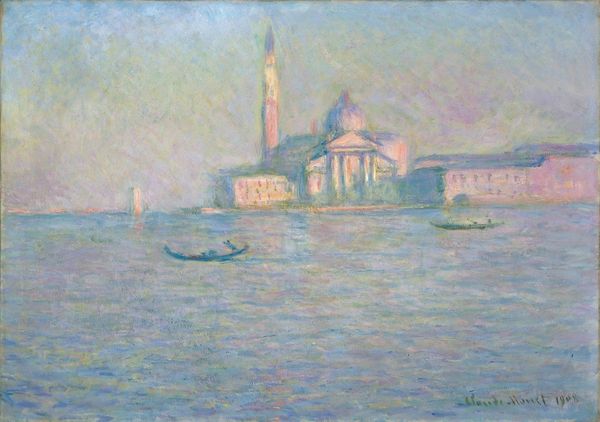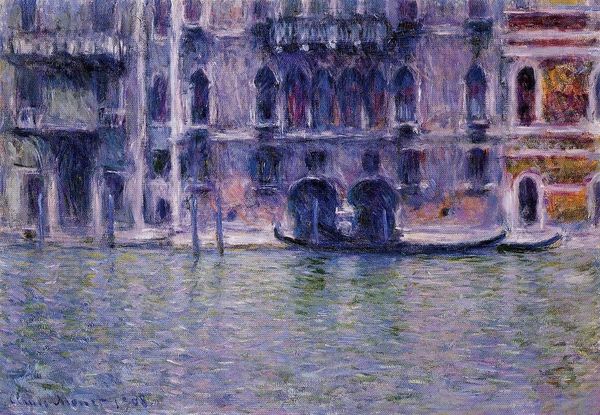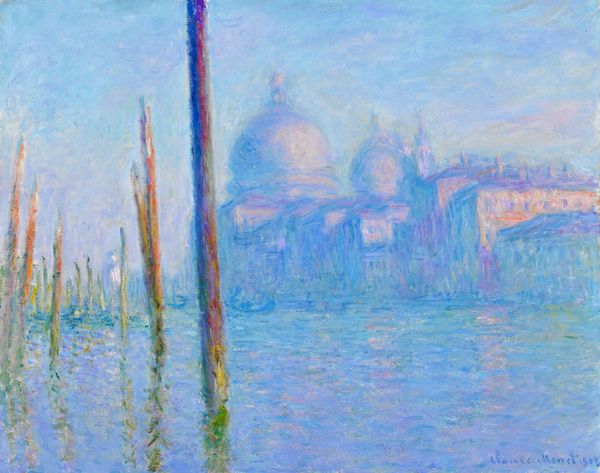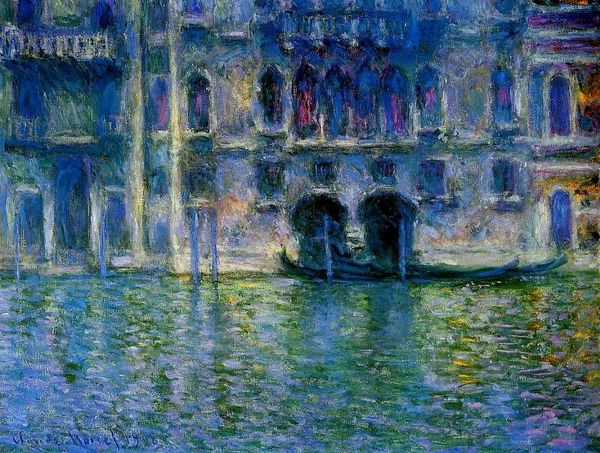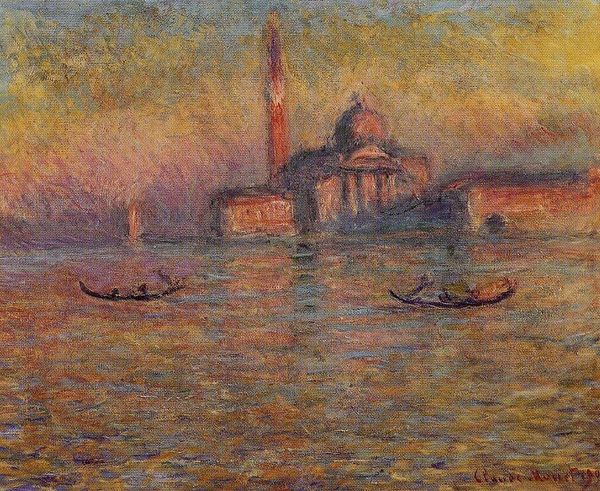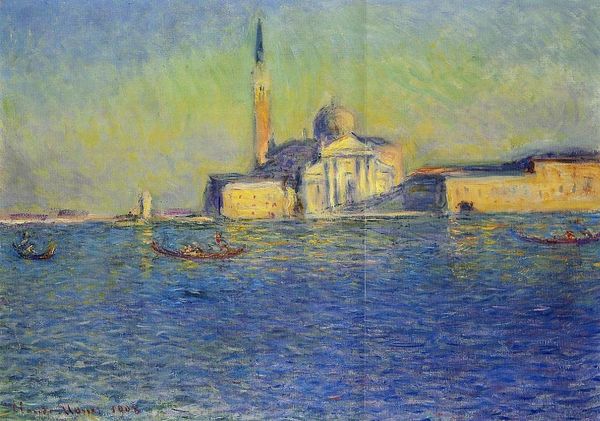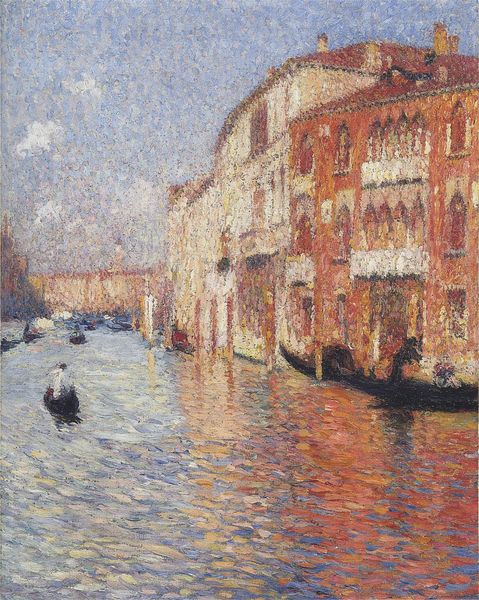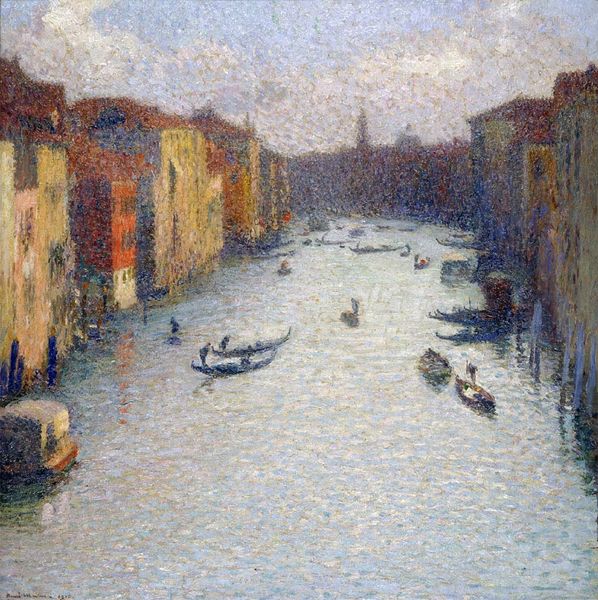
Copyright: Public domain
Editor: This is Claude Monet's "The Grand Canal," painted in 1908. It's an oil on canvas, and it really strikes me as a study in the interplay of light and water. Everything seems to dissolve into shimmering reflections. What do you see in this piece from a formalist perspective? Curator: The formal qualities are indeed compelling. Consider the composition. Monet divides the canvas into distinct zones through color and texture: the aqueous foreground, the architectural middle ground, and the atmospheric sky. How do these divisions function? Editor: It seems to create depth, like the water is this hazy veil in front of the city. I wonder about his use of brushstrokes too. Curator: Precisely. Note the fractured brushstrokes – short, dab-like applications of paint, particularly in the water. They function semiotically, denoting movement and reflecting light. Observe, also, how these marks differ from the more elongated strokes used to describe the buildings. Do you see a relationship emerging? Editor: I think so! The difference makes the buildings feel solid and almost permanent, while the water feels fluid and changing, all depending on how Monet applied the paint. Is that on purpose? Curator: Such distinctions contribute to the painting's overall sense of dynamism. He’s capturing a fleeting moment, a sensation, rather than a precise record of Venetian architecture. The semiotics of color, brushstroke, and composition converge to produce a meditation on perception itself. Editor: Wow, breaking it down like that makes me see how intentional every choice was. It's more than just a pretty picture; it's a whole system of visual language working together. Curator: Indeed. Understanding these formal relationships deepens our appreciation for Monet's achievement, wouldn’t you agree? Editor: I completely agree! Looking closely reveals how much can be conveyed through even simple techniques, like changing brushstrokes.
Comments
No comments
Be the first to comment and join the conversation on the ultimate creative platform.
